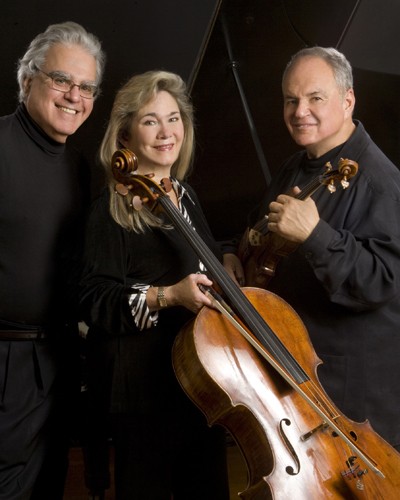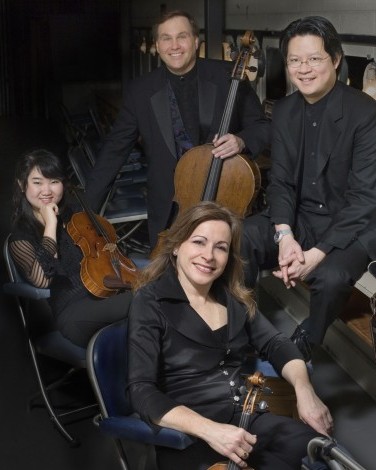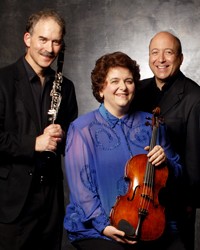On tonight's show:
Friends of Chamber Music

From this year's Chamber Series, the Kalichstein-Laredo-Robinson Trio and the Miami String Quartet play a new Septet written for them, as well as the Boccherini Quintet (the one with the Minuet).
Luigi Boccherini: Cello Quintet in E major, Op. 11, No. 5 (G. 275)
Sharon Robinson, cello
Miami String Quartet
Benny Kim, violin (substituting for Ivan Chan)
Cathy Robinson, violin
Yu Jin, viola
Keith Robinson, cello
Ellen Zwilich: Septet
Kalichstien-Laredo-Robinson Trio
Joseph Kalichstien, piano
Jaime Laredo, violin
Sharon Robinson, cello
Miami String Quartet
Benny Kim, violin (substituting for Ivan Chan)
Cathy Robinson, violin
Yu Jin, viola
Keith Robinson, cello
April Travers, page-turner
recorded 11/11/09
Colorado Chamber Players
Charley talks with Colorado Chamber Players artistic director Barbara Hamilton-Primus about their recital tomorrow at the Littleton Historical Museum.
III. Rondo: Allegretto (includes interview)
Colorado Chamber Players
Daniel Silver, clarinet
Barbara Hamilton-Primus, viola
Andrew Cooperstock, piano
KVOD Performance Studio: recorded 4/19/10
Produced by Martin Skavish
Program Notes by Charley Samson, copyright 2010.
Wolfgang Amadeus Mozart: Trio in E flat major, K. 498 (Kegelstatt)
III. Rondo: Allegretto
K.498 was written for Mozart's pupil, Franziska von Jacquin. It was probably first played privately for their little social circle, which included Franziska's brother Gottfried, the singers Michael Kelly and Nancy Storace (both were in the original cast of The Marriage of Figaro), Nancy's brother Stephen Storace (a composer) and another Mozart pupil, Thomas Attwood. The Trio was proably played by Franziska on piano, Mozart on viola and Anton Stadler on clarinet.
The Trio is subtitled "Kegelstatt," or the "Bowling Alley Trio," because of the legend that Mozart wrote it while playing skittles, or nine-pins ("kegel" in German). The Dutch scholar Marius Flothuis suggest the title is more appropriate to the twelve Horn Duos, K.487, which were composed nine days before the Trio, which was complete on August 5, 1786.
Alfred Einstein calls K.498 "a work of intimate friendship and love." Eric Blom regards it as "perhaps the most adorable" of all Mozart's trios. "This is a great work," he writes, "in which the somber color of the wind and the string instrument as well as the affection Mozart had for both of them called splendidly knit and emotionally fully charged music from him."
